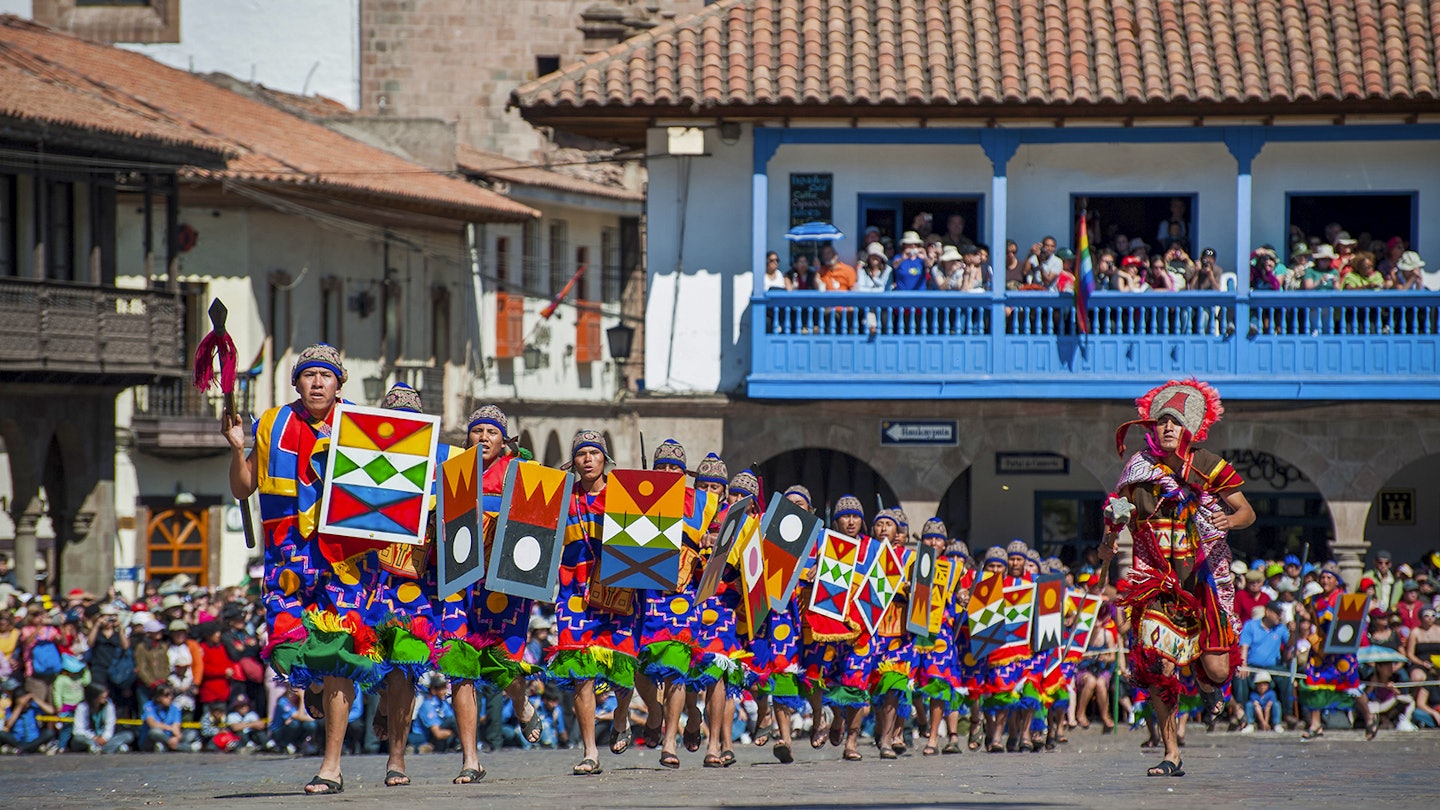
The 30 best countries, cities and regions to visit in 2025

May 22, 2019 • 3 min read

Cuzco's Inti Raymi celebration is the biggest in South America © HUGHES Hervé / hemis.fr / Getty Images
The solstices hold spiritual and religious meaning in societies around the world, and many of our modern day solstice celebrations have long historical roots. The Inti Raymi festival reigns supreme in South America, an Inca tradition celebrated by Andean people across the continent during the June solstice.

Inti Raymi honors the Inca sun god Inti, the Inca’s most important deity, and it takes place every year on June 24 – the winter solstice in Peru, and the Inca solar new year. Today’s festival is based on descriptions from Peruvian writer Inca Garciloso de la Vega, who published his observations of the festival in his tome Comentarios Reales de los Incas (1609). The festival was outlawed by the Spanish in the mid-1500s, and afterwards it took place clandestinely or not at all.

Today, you'll find Inti Raymi celebrations in several South American countries including Ecuador, Colombia and Bolivia, and Peru. Inti Raymi was officially reinstituted there in 1944 with the biggest festival taking place in Cuzco, where hundreds of thousands gather to watch the massive procession that takes over the city.
The event starts at Qorikancha, the Sun Temple. Before colonization, this building was the one of the richest and most sacred of the entire Inca empire; it was gilded in gold, and today all that remains is the foundation, as the top of the structure was converted into a church by the Spanish. Inti Raymi begins when the Sapa Inca (the “only Inca” in Quechua) leads praise to the sun god, and the procession then makes its way to the city’s main plaza, Plaza de Armas, for a coca leaf-reading ceremony given in Quechua. In the plaza, onlookers take in the performances of hundreds of participants, each wearing traditional dress that represents important roles (the Inca Queen, warriors, sun maidens and more). The festivities progress to the temple fortress Sacsayhuaman – one of Cuzco’s most iconic archaeological sites – only a short walk from the historic center. Here, the festival celebrations culminate in a simulated llama sacrifice (no llamas are harmed!) and much fanfare, with music, drums and dancing.

Since Inti Raymi is one of the biggest festivals in Peru, hotels and tour bookings should be made far in advance – prepare for increased rates, too. Access to the festival is free while in the city; you can purchase tickets to tiered grandstand 'zones' within the Sacsayhuaman to watch the celebrations from the best vantage points, but prices are steep (the cheapest runs close to US$200). Many people opt to watch the festival from two hills near the fortress (technically still part of the archaeological park) – be advised that these fill up early in the morning, so wake up early to snag your spot.
Tickets can be purchased via local tour operators like SAS Travel.
Show up early – good views of each part of the festival are limited, so the earlier you arrive the better.
Bring water and sunscreen, as Inti Raymi usually lasts about 6 hours.
Cuzco shuts down all traffic for the festivities, so don’t try to hop into any cars except approved tourist transport.
https://shop.lonelyplanet.com/products/peru-travel-guide-10?via=Z2lkOi8vbG9uZWx5LXBsYW5ldC9Xb3JrYXJlYTo6Q2F0YWxvZzo6Q2F0ZWdvcnkvNTllZTQ5YzFmOTJlYTE0MTg2MDU4Nzgy
Plan with a local
